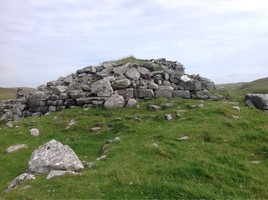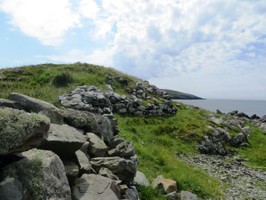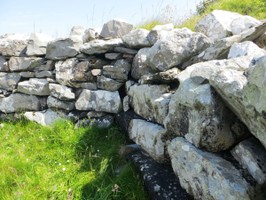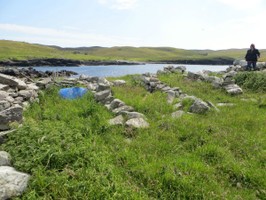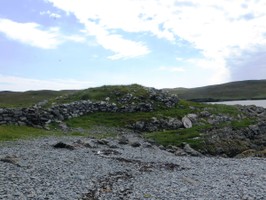| Tidal state |
Mid |
| Site located? |
Yes |
| Proximity to coast edge |
Coast edge |
| Coastally eroding? |
not eroding |
| Visibility above ground |
Highly visible (substantial remains) |
| Visibility in section |
Clearly visible in section |
| Access |
easily accessible - no restrictions |
| Local knowledge |
has local associations/history |
| Description |
The much reduced remains of a broch occupy a small, low headland. It is surrounded by the sea on three sides and up to one third of the building has already been damaged by coastal erosion. The surviving walls stand to over 1m in height and the building has an overall diameter of about 20m. The interior is filled with rubble and is largely grass-covered. Stone derived from the broch has used to build sheep shelters and dykes. These butt against and reuse part of the structure of the broch. The structure is currently being eroded by the sea and has also been damaged by stone robbing and opportunistic digging and rubble clearing.
Additions from 2014 site visit:
Site visit in July, 2014. The structure retains a natural stone shore defence which protects what remains of this broch. That natural shore protection and its situation, within the end of the Voe of Footabrough, affords a decent level of protection from further erosion. |
